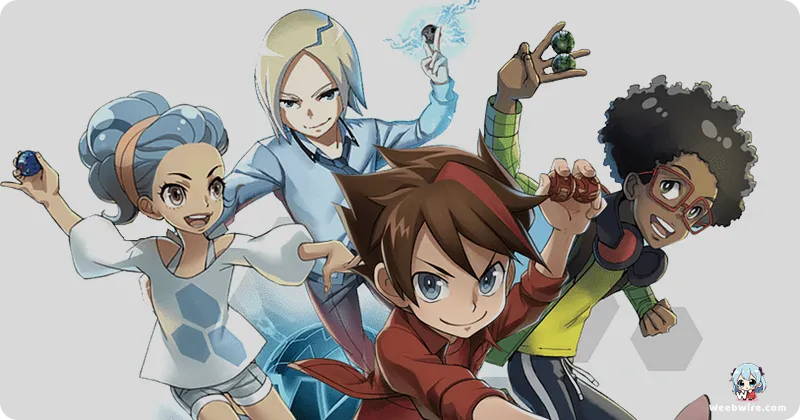Beyond the Manga: The Surprising Canadian Roots of Bakugan's Global Phenomenon

Exploding onto the global entertainment stage in April 2007, Bakugan Battle Brawlers swiftly captivated audiences, from avid anime enthusiasts to children across continents, evolving into a phenomenon far grander than its original design. While popular belief often places its genesis within the traditional Japanese anime framework—adapting an existing manga or light novel—the true narrative behind Bakugan Battle Brawlers unfurls a remarkably intriguing and often overlooked saga of groundbreaking cross-cultural partnership and astute strategic foresight.
Against conventional wisdom, Bakugan Battle Brawlers did not originate as a Japanese manga or light novel. Its surprising roots stretch across the Pacific to Canadian toy giant Spin Master. Fueled by a revolutionary concept for collectible, transforming spherical toys, Spin Master dared to envision a full-fledged multimedia franchise. Their audacious strategy was unprecedented: to launch an anime first—a dynamic, action-infused animated series—specifically designed to introduce and popularize their innovative toy line. This audacious move represented a radical deviation from the prevailing industry norm of adapting established print media into animated formats, a gamble that ultimately paid off handsomely.
To bring this ambitious vision to life, Spin Master forged critical alliances, partnering with fellow Canadian entertainment stalwart Nelvana for co-production and global distribution. Crucially, they enlisted the legendary Japanese animation house TMS Entertainment, celebrated for its iconic contributions to titles like Lupin the 3rd, Detective Conan, and Hajime no Ippo. TMS Entertainment's unparalleled mastery in crafting fluid, high-octane action sequences and expressive character animation proved instrumental, ensuring every Bakugan battle was a visually stunning and exhilarating spectacle, a cornerstone of the series' immense allure. This collaborative synergy between Western innovation and Eastern animation prowess created a unique blend that resonated globally.
The 'toy-first, anime-driven' paradigm proved to be an astounding triumph, catapulting Bakugan far beyond a simple product into a bona fide global cultural touchstone. Yet, the series held another remarkable surprise: its profound ability to transcend purely commercial roots through masterful storytelling and nuanced character arcs. Far from being a mere sales vehicle, Bakugan Battle Brawlers meticulously constructed a vibrant world populated by profoundly relatable figures such as the impulsive Dan Kuso, the composed Shun Kazami, the determined Runo Misaki, and their eclectic circle of companions. The anime fearlessly explored intricate themes of enduring friendship, fierce rivalry, personal self-discovery, and the weighty mantle of responsibility, imbuing each intense battle with significant emotional resonance and making the characters truly memorable.

Perhaps the most crucial ingredient in the series' widespread acclaim, and a powerful testament to its unexpected narrative depth, was the deeply moving and continuously evolving connection between the human Brawlers and their sentient Bakugan allies. These weren't just inanimate tools; Bakugan such as Drago, the formidable Pyrus dragon partnered with Dan, were endowed with distinct personalities, intricate thoughts, and palpable emotions. Drago, notably, emerged not only as Dan's most potent fighting companion but also as his wise mentor and steadfast confidant, their bond deepening through a gauntlet of trials and profound sacrifices. This powerful emotional bedrock, further amplified by stellar voice performances (including Keiji Fujiwara's iconic, authoritative yet tender rendition of Drago in the Japanese dub), propelled the series far beyond the confines of a mere marketing strategy, forging a genuine viewer investment in the intertwined destinies of both the Brawlers and their beloved Bakugan.
Moreover, enthusiasts of the physical Bakugan game frequently observe a compelling divergence when contrasting it with its animated counterpart. While the show meticulously integrated core components of the Bakugan battling system, it frequently embraced artistic license to heighten dramatic impact. Battles depicted in the anime were consistently more intricate and strategically multifaceted than the constraints of the physical card game permitted, unveiling unique Bakugan abilities, dynamic environmental interactions, and ingenious, unexpected tactical maneuvers that utterly enthralled viewers. This creative latitude empowered TMS Entertainment to unleash stunning transformations and visually spectacular, devastating attacks, culminating in a fluid, cinematic experience unburdened by the rigid mechanics of a tabletop game. This strategic deviation enabled the anime to truly thrive as a compelling, independent narrative, even as it simultaneously served its purpose in promoting the associated merchandise.
Bakugan Battle Brawlers ultimately stands as a singular triumph in the annals of animation, a powerful testament to the extraordinary heights attainable when diverse creative entities from across the globe converge with a unified vision. Its unconventional genesis, remarkable character profundity, and ingenious fusion of marketing acumen with masterful narrative craft cemented its status as a cherished classic. It unequivocally demonstrated that even a concept originating from a toy line could achieve profound storytelling and indelible cultural resonance on a worldwide scale. Beyond selling millions of toys, the series forged an enduring legacy, spawning a multitude of successful sequels, immersive video games, and captivating spin-offs, all firmly anchored in that initial, groundbreaking collaboration that fundamentally reshaped perceptions of what a 'children's anime' could truly embody.
Credits
Bakugan Battle Brawlers
Author
Original Concept: Spin Master, Nelvana, TMS Entertainment
Cover Art
TMS Entertainment Animation Team
Studio
TMS Entertainment
Publisher
Spin Master (Toy Concept), Sega Toys (Card Game)
Producers





